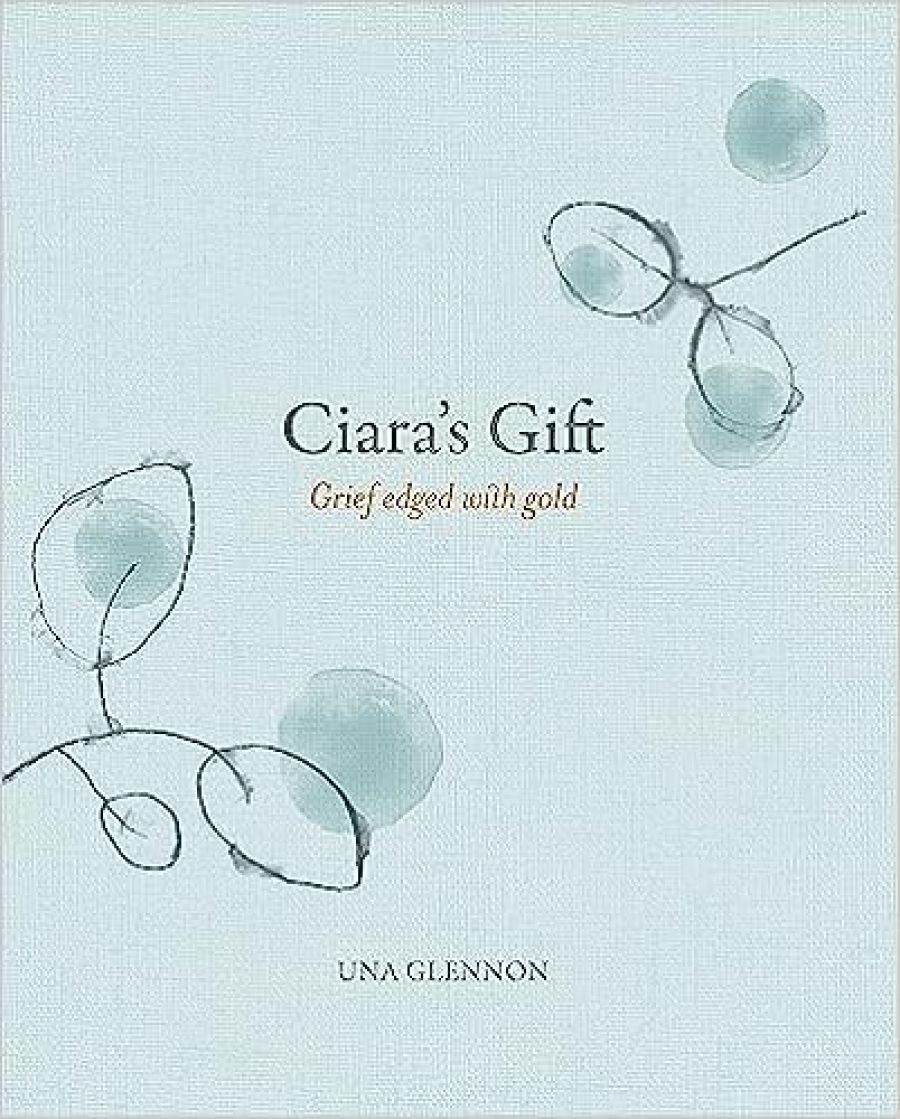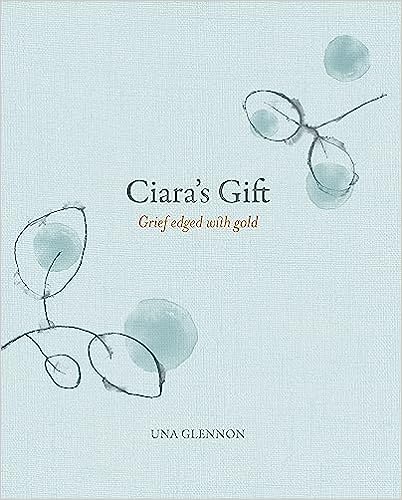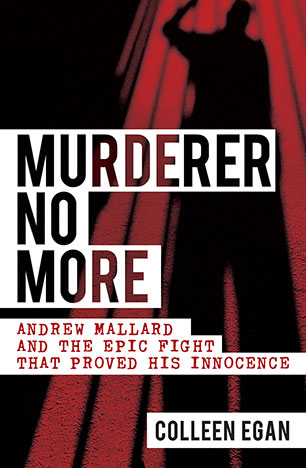
- Free Article: No
- Contents Category: True Crime
- Review Article: Yes
- Article Title: Prime suspect
- Article Subtitle: The limits of justice in Western Australia
- Online Only: No
- Custom Highlight Text:
In 1996–97, three young women were abducted from the nightclub area of Claremont in Perth, and murdered. One of them was a young lawyer, Ciara Glennon. Her mother, Una Glennon, has written a memoir of her passage from despair, anger and grief to a mature and rounded understanding of the complexity of the human condition. Her book is a wise and beautiful one – written sparingly, without unnecessary personal embellishment. ‘Life can only be understood backwards, but it must be lived forwards,’ she says, quoting Kierkegaard.
- Book 1 Title: Ciara's Gift
- Book 1 Subtitle: Grief Edged with Gold
- Book 1 Biblio: UWA Publishing, $29.95 hb, 115 pp
- Book 1 Cover Small (400 x 600):

- Book 2 Title: Murderer No More
- Book 2 Subtitle: Andrew Mallard and the epic fight that proved his innocence
- Book 2 Biblio: Allen & Unwin, $32.99 pb, 303 pp
- Book 2 Cover Small (400 x 600):

In an interview, the author has said that she wants people who are suffering loss to read the book. ‘I think that, like me, they would benefit from reading another person’s experience of grief.’ She is absolutely right in this supposition. Her journey, under extreme stress, moved her away from her Catholicism, later to reconnect with it. But her reliance on religion does not diminish the book or make it irrelevant to non-believers. Whatever one’s belief system, unexpected and sudden family death shakes it to the core. Some return to it; others do not. Una Glennon’s own growth is meaningful, whatever one’s starting point. I surmise that she would never have written a book but for Ciara’s death. It is small consolation to say that, as readers, we have gained from this sad event.
The book never canvasses the ‘whodunit’ aspect of the murders. Police seem to have been struggling; there have been sixteen unsolved murders of women in Perth in the last two decades. With the Claremont murders, the Western Australian police seem to have fallen into the trap of first deciding who was the ‘prime suspect’ and then concentrating excessive attention on that person, to the virtual exclusion of other possibilities.
In this case, a public servant living at his parents’ home in the adjoining suburb of Cottesloe seemed to fit the bill. For many years he was subject to surveillance so overt as to amount to intimidation, ultimately causing him to suffer a mental breakdown. Yet there has never been a skerrick of hard evidence linking him to the crimes. One is bound to wonder what other possible leads were overlooked during this period. These investigations are arduous and complex; but tunnel vision makes them well-nigh impossible.
This observation is the link to Colleen Egan’s account of the Mallard case. In 1994 in Mosman Park, a suburb near Claremont, a jeweller, Pamela Lawrence, was bludgeoned to death in her shop. Almost immediately the police jumped to the conclusion that a delusional drifter, Andrew Mallard, was the prime and only suspect. Egan’s book meticulously traces the way in which the police re-arranged interview material, planted evidence, attempted to entrap Mallard by the use of undercover techniques, kept him away from legal advice, suppressed exonerating evidence and finally structured an interview in ways that were grossly misleading when presented in court. This course of conduct went, in Egan’s view, well beyond ‘noble cause corruption’ (convicting a clearly guilty person by slight bending of the evidence) to conspiracy to pervert the course of justice. The prosecutorial authorities arguably became enmeshed in this. Mallard was convicted of wilful murder.
Egan, reluctant at first, was gradually drawn into this apparent miscarriage of justice. Her book is the story of how she and a team of eminent lawyers working pro bono fought the case through two Western Australian Supreme Court appeals and two High Court appeals until, twelve years after conviction, Mallard was released.
The story does no credit to the Western Australian judicial system, which, even at the highest levels, seems to have over-identified with the need to protect police and kowtow to prosecutorial status. The Office of the Director of Public Prosecutions emerges in an appalling light also. An overseas expert brought in towards the end stated, ‘I am absolutely sure that our prosecutors in the UK would never have taken this brief to trial. They’d have told the police to piss off and not come back until they had a proper case.’ Yet even after announcing that Mallard would not be re-tried after the High Court verdict had finally quashed his conviction, the DPP could not resist stating that he remained the ‘prime suspect’.
Eventually, the Corruption and Crime Commission commenced an Inquiry. Two senior detectives and a senior DPP lawyer were found guilty of misconduct and lost their jobs, though two of them were well looked after by the Perth Establishment. Under pressure, a cold case review by the Police Department discovered what a proper investigation would have discovered in 1994: that a palm print at the scene of the crime matched that of a person who was now serving time for another murder committed in a similar way a few weeks before that of Pamela Lawrence. News of his impending charge leaked out, and he committed suicide. Thus, belatedly, Mallard was no longer, even in the eyes of the DPP, the ‘prime suspect’. Also, the angst and uncertainty suffered by Pamela Lawrence’s family in coping with the fact that the person they had thought was responsible for her murder was not the offender was at last dissipated.
This is an important point. Poor quality or tunnel-vision police work victimises not just innocent accused persons but also the immediate victims. A falsely resolved case is as bad as an unsolved one, in terms of the potential distress to genuine victims, the knock-on effects when the falsity is revealed and the erosion of confidence in the legal process.
The Western Australian Police have in recent years all too readily selected the supposed offender prematurely and put their subsequent efforts into finding facts that fit their theory, rather than doing proper police work. Other cases include: the Mickelbergs for gold stealing, Christie for alleged murder and, most recently, a criminal lawyer whom the police foolishly nominated at a media conference as the ‘prime suspect’ in his wife’s murder. In each of these cases, open-minded investigation, lateral thinking and old-fashioned fact-gathering seem to have come to a halt once the preferred and convenient solution had been identified.
Does this mean that the Western Australian Police is more liable to jump to facile conclusions than other Australian police forces? Probably not. But it does indicate that some kind of external quality control of protocols and management practices is required. Police culture is notoriously introverted and over-defensive, even at command levels. Cases such as Mallard’s and the Claremont murders indicate that we are not always getting the level of investigative integrity and competence that we should. An inspectorate system, such as that found in the British Chief Inspectorate of Constabulary, would enable the achievement of higher technical and ethical standards, preferably at a national level, in an ongoing and continuous way. Bodies such as the Corruption and Crime Commission do not quite fit the bill. They inevitably deal with situations where the harm has already been done, often many years previously.
Egan’s story is also one of hostility and harassment towards those who took up Mallard’s cause. Phones were tapped, complaints lodged with professional bodies, behind-the-scenes whispers made to editors and employers about these troublesome people. The notion of abstract justice was swamped by that of guarding one’s back. It was an ugly story.
A link back to Ciara’s Gift is the impact that the journey made on Egan herself. In the nine years she was associated with the case, she lost some of her cynicism – a normal and necessary journalistic defence mechanism. She implies that she became a better person. So did Andrew Mallard: ‘I became a better man … It’s something I can draw on and draw strength from. I understand myself now.’ This echoes what Una Glennon says about herself: ‘Strength through adversity.’ It is intriguing to think that these very different perspectives on violent death have an existential unity.


Comments powered by CComment